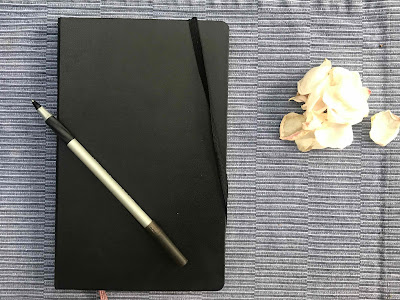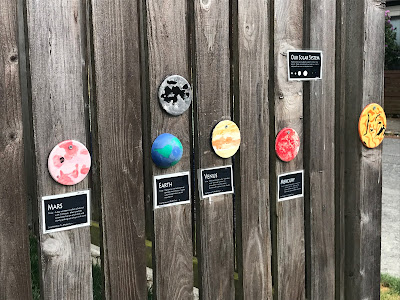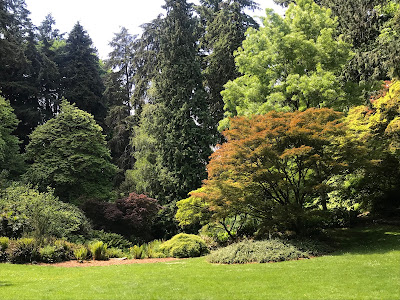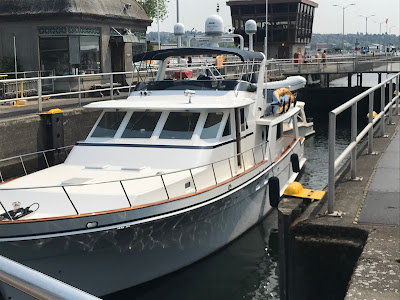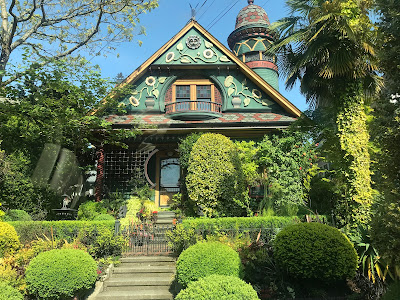A Pile of Petals
The climbing rose has come into its own, has come into and gone past it, if you want to know the truth. But it hung in there long enough for me to see it, even after I had the audacity to spend 10 days away during its peak blooming period.
I attribute the rose’s survivability to scant rain and wind — and maybe, even to profusion: with so many buds to bloom, the process takes time.
Now comes the season of deconstruction, of light pink petals falling gently to the deck, the railing, the glass-topped table, even into the dregs of my morning tea.
I keep a pile of petals beside me as I work. From time to time, I run my fingers through them and feel their velvety softness.
(The climbing rose seen from above and the pile of petals I kept beside me as I work.)

